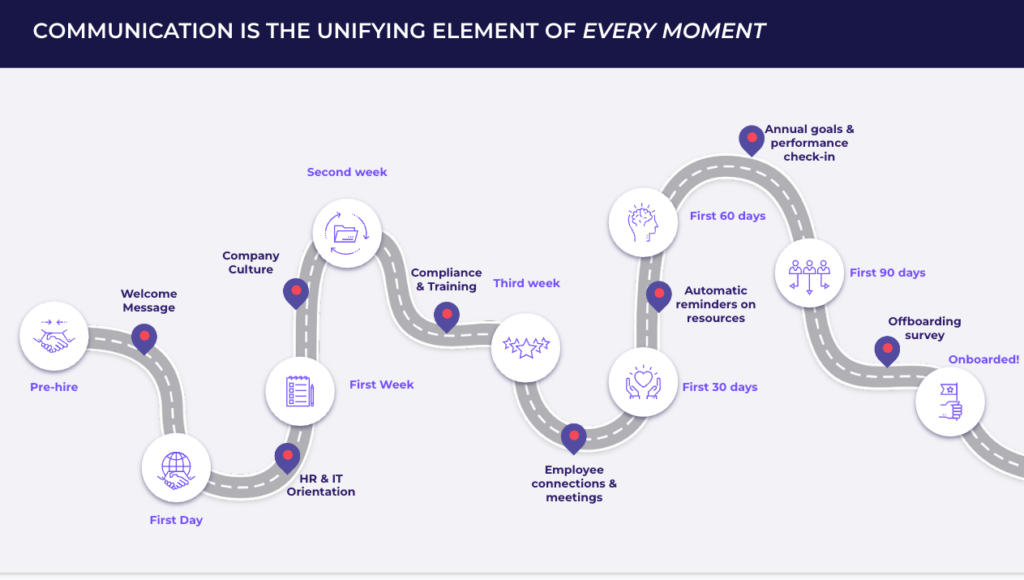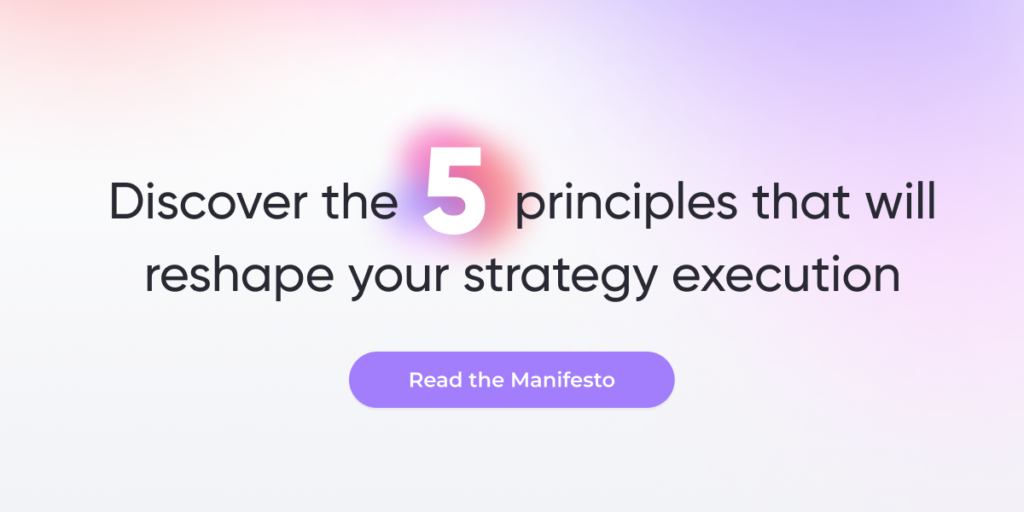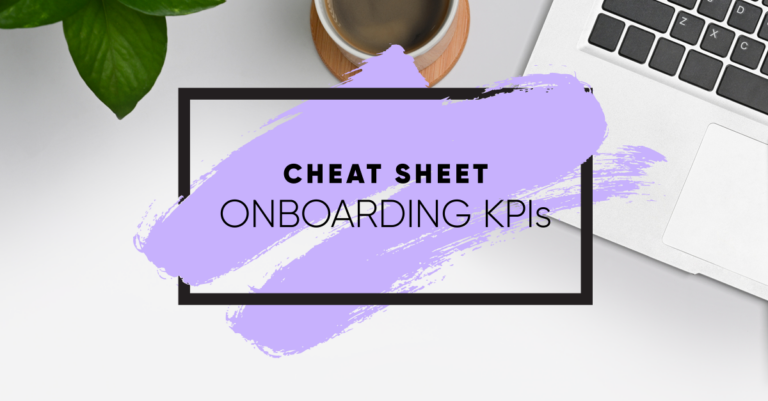Every leader knows they need people – great people – to deliver on their objectives and move the company forward. And we all know that in this environment, attracting and retaining top talent is the difference between businesses that win and lose.
New hire onboarding is a bottom-line issue and a strategic accelerant when you get the right people in the right roles. When you get it wrong, it can cost your company up to 300% of the employee’s salary. Team and company morale is also impacted when a new hire decides the company is not the right fit and quickly leaves. And, as many as a third of employees quit within the first 90 days. It is imperative you get it right.
But how? What does a positive new hire experience look like? At the foundation of a great new-hire experience is communication; intelligent communication. Just like any other moment that matters in the employee experience (large and small), communication is key. From the moment the new hire signs on, to the HR orientation, compliance training, and manager 1-1s, communication is at the heart of the onboarding journey.

During the first 90-days, there are multiple touchpoints that include communications. In fact, I would argue all touchpoints in the new hire journey are in some way communications. While there is a lot that organizations can do to enhance their onboarding programs, here are a few recommendations I believe truly make a difference.
1. Understand your new hire’s change and challenges
No matter how experienced your new hire is, they have a lot to learn when starting over at a new company. They have to learn the culture, the process for getting things done, organizational structure, new systems and so much more. Plus, their personal lives may be impacted by the job change too.
Changing jobs is an overwhelming experience. The first step to a positive onboarding experience is simply understanding your new hire’s challenges and providing two-way communication opportunities, empathy, and resources to help with reassurance. A few tips:
Send a pre-boarding gift: During those pivotal two to four weeks before they start, consider sending a pre-onboarding gift. It can be something simple like a branded coffee mug and a note saying, “We can’t wait for you to start,” and “Email us with questions.”
Have the manager reach out: No one has a bigger impact on a new employee’s success than the people leader. Have the hiring manager send a quick video or slides that walk through the company mission, their onboarding team, and the plan for the new hire’s first few weeks. Better yet, provide your hiring managers with a template so they can quickly customize a short slide deck. These efforts help reassure the new employee that you have a plan for them and their future will be bright at the new company.
Organize the first day: It is crucial, in a virtual or in-person world, to have 1-1 time right away. Designate an onboarding specialist or team member to meet with the new hire at the beginning of their day. Ensure that HR and IT orientations are on their schedule for day 1 so that they can access systems and complete their paperwork. Most importantly, ensure the manager has 1-1s set up and has an onboarding plan ready to communicate.

2. Standardize and automate the onboarding process
It is important for all new hires to be connected to the same company information, resources and training. This ensures employees all start with a similar foundation and know where to find the tools and resources to do their job. While I highly recommend personal touch points like those mentioned above, standardizing the process can connect and remind employees about key information, especially during an overwhelming time. Standardizing also saves your company time – hiring managers, HR and those involved in the onboarding process can create materials and then let the automation do its job.
At Firstup, our HRIS system is connected to our communications platform, allowing us to automatically connect new hires to the platform. As soon as the new hires start, they receive targeted communications through an automatic drip campaign. Every few days, we send them important content via email or mobile push notifications, including welcome videos, employee resources and links to policies, compliance training, Firstup norms and lingo, the annual goals, and so much more. This content is scheduled to send automatically throughout their new hire journey. It is a great way to enhance the in-person onboarding training and hiring manager’s onboarding plan. Our People Team can set it and forget it, making it an efficient way to send reminders and resources.
Happy employees mean happy customers
3. Make them feel like a part of the team
There is nothing harder than joining somewhere new where you don’t know anyone. Company and employee connection is key to a successful onboarding process. To make them feel like a part of the team, there are key communications that can be included in your onboarding process:
Organizational announcements: Provide your managers with a template and guidance to write an amazing organizational announcement. This helps the employee feel welcome and also helps coworkers understand the new hire’s role.
Employee introductions: Provide your new hires with a digital space to make an introduction. This is especially important with a distributed workforce. Is there a channel where new hires can post their pictures, job titles, and fun facts? At Firstup, we have a “Celebrating Our People” topic on our platform where new hires post their introductions. These introductions are some of the highest-rated content on our platform. People love to celebrate people and enjoy authentic introductions and pictures.
Town hall previews: Do you have a large all-hands meeting or town hall where you can share preview slides before a meeting starts? Typically, most meetings start a few minutes late as people jump from virtual meeting to virtual meeting. Why not make good use of that time by sharing a slideshow that has pictures of the new hires with their name and title? This is a simple communication that goes a long way because it makes the employee feel welcome and also communicates the new hire’s role in the organization. Plus, it usually gets the chat going in our Zoom call. It’s a great way to build energy and start a town hall.
Onboarding buddies: I love an onboarding buddy program that connects new hires with current employees at the company. I recommend having a buddy program where new hires are assigned a current employee to meet with during the first 90 days. This helps the new hire meet cross-functional members of the organization. It also helps build relationships for future projects. Most importantly, it gives the new hire a go-to person for all company questions. Sometimes, you have silly questions you don’t want to ask your boss and the onboarding buddy is perfect for this.
4. Listen
Great communication is not only talking, it is also listening. Be sure to ask your employees how they are feeling. Conduct a quick pulse poll at the two-week, six-week, and ten-week mark to ensure they feel heard. You also gain valuable data to course correct if something isn’t working according to plan.
With one-third of your employees quitting during the first 90 days, we need to get ahead of it and spend more time ensuring the communications are right – authentic, transparent, and two-way. It not only saves you money, but it’s also an important investment in your people and culture, which is the driver of winning companies.
The ultimate onboarding checklist for the comms-driven HR leader
Onboarding is the first employee experience a new hire has with your company. Make it count!
Download PDF









